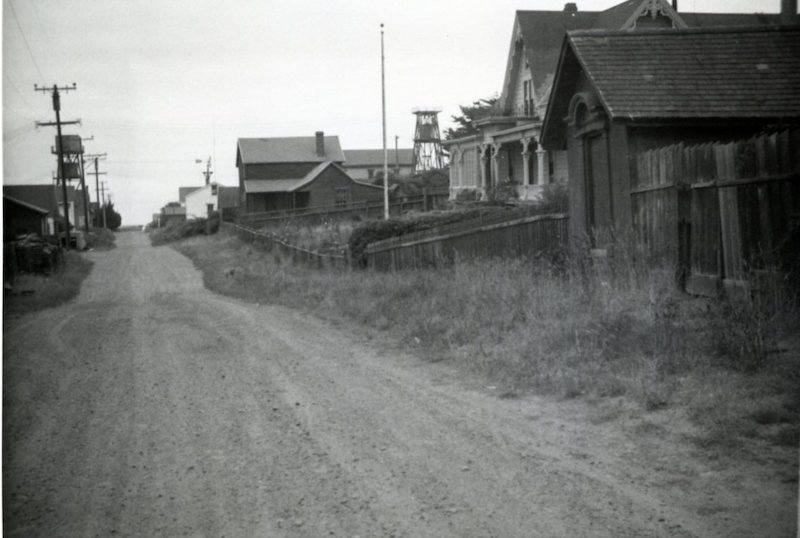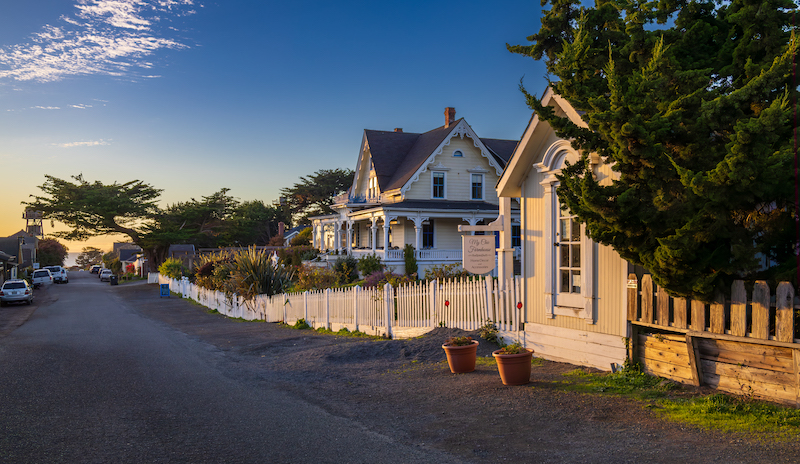These two images, taken 66 years apart, look west down Albion Street in Mendocino.

Albion Street, 1957. Photo by Robert Duke. (Gift of Bette Duke)

Albion Street, 2023. Photo by Robert Dominy.
In the foreground on the right side of both photos is a unique apple shed designed and built in the 1860s by Erick Albertson, architect and builder of Mendocino’s Masonic Hall on the northwest corner of Lansing and Ukiah streets (today, the Savings Bank occupies the ground floor). The apple shed was originally situated on the south side of Albion Street east of the Kelley house, near an apple orchard. It was later moved across the street to Daisy MacCallum’s property.
Just like the Masonic Hall, the shed’s ceiling is a curved barrel vault, and the doorways and windows are trimmed in the Greek Revival style with pediments and Doric columns. Measurements reveal that the shed’s diminutive architectural design is based on the Golden Mean, a proportion important in Masonic tradition and used in ancient buildings throughout the western world to create harmony and beauty. Today, the apple shed houses My Chic Farmhouse, a charming home décor and accessories boutique, owned by Rosanna Bertheola.
West of the shed is the MacCallum House (today’s MacCallum House Inn). This home was built in 1881 by J. D. Johnson for newlyweds Alexander and Daisy (Kelley) MacCallum. The building was originally located farther north on the property, but in 1908, Daisy had the house moved to its present location and extensively remodeled. The flagpole was added during World War II.
Beyond the MacCallum House in the 1957 photo is a dwelling known as the Cameron house that has since been torn down. Beyond that is the Heeser house, with a free-standing windmill visible over its roof. A storm toppled this windmill in 1983, but it was rebuilt using the original redwood and is located behind the cypress tree in the recent photo.
The first Heeser water tower sits near the center background in the 1957 photo, with only one of its two water tanks. A replica, which was constructed after the original tower was blown over by strong winds in 1974, can be seen peeking through the tree foliage in the 2023 photo.
The water tower on the south side of the street was built by Perley Maxwell in 1924 to supply water to the building that housed B. L. Elliot’s general merchandise store (today’s Gallery Bookshop) on Main Street. Bill Zacha enclosed the lower portion of this tower in 1964, and the building become an art studio and retail space.
The Kelley House Museum is open from 11AM to 3PM Thursday through Monday. If you have a question for the curator, reach out to curator@kelleyhousemuseum.org to make an appointment. Walking tours of the historic district depart from the Kelley House regularly.